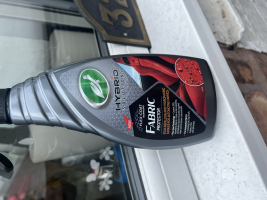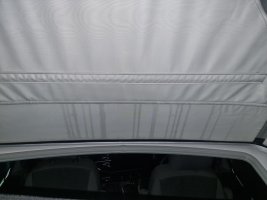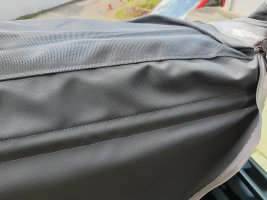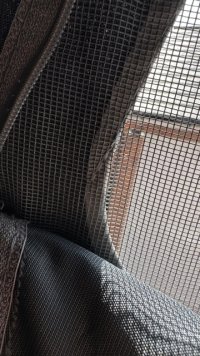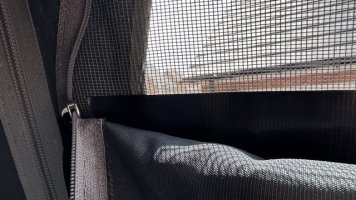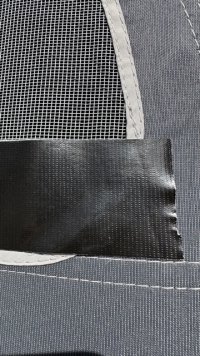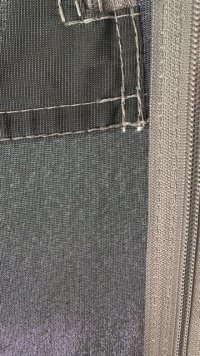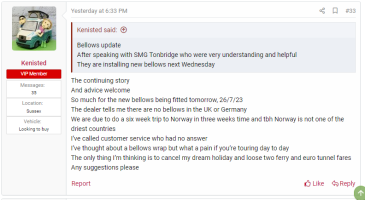I don't think it would work on the outside of the seam as thats the very front face of the bellows & on the outside of the mesh. If you seal the outside you would be stopping the water coming out that way so could make things worse.
I think it needs to be on the outside face of the fold down flap so behind the mesh when looking from outside the van. I would be experimenting with putting something like a straw under the tape to make a bump/ledge just above the bottom of the mesh window to try and get the water going out via the mesh.
An alternative would be to tape some plastic sheet to the inside face of the mesh making sure that the bottom of it is sealed pretty well, again to try and stop the water coming through the mesh & it it does to drain it outside the van.
Next time it rains, someone with a leak need to open the flap & see if water is pooling at that bottom seam.
On the photo below , it may just be the angle its taken at & the way the fabric is laying, but it looks like little pockets have formed in places in that seam where the mesh is stitched onto the flap. In those places the water would go down below the top edge of the seam & then presumably leak on the inside. When you then look at the leaky internal photos its not a continuous consistent line of leak, but more a series of individual leaks, I window if they line up with the "pockets" in the photo.
The angle of the photo below may not be clear, but its the flap opened & laid flat & taken from the top of the flap, so water would be running down away from the camera.
View attachment 111853



